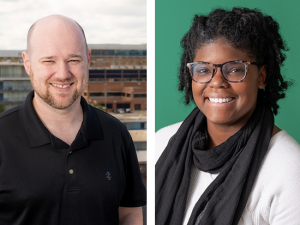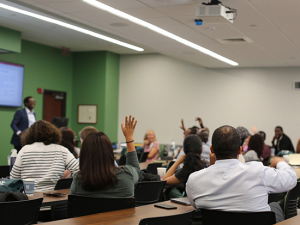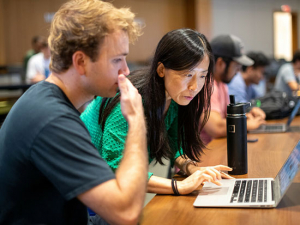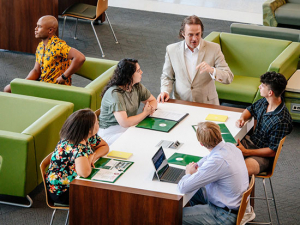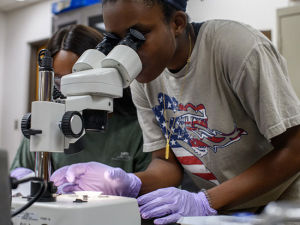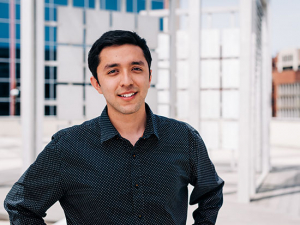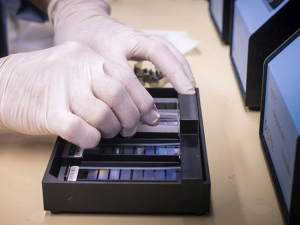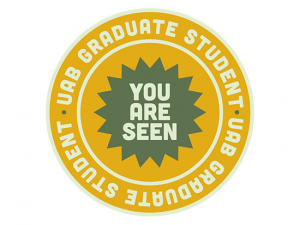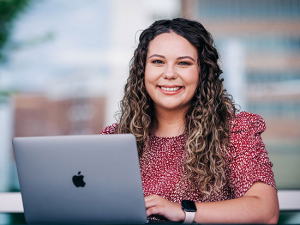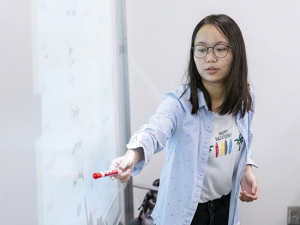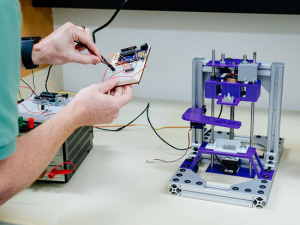 After the catastrophic Deepwater Horizon oil spill in 2010, investigations pointed out numerous instances of operator error, as well as cost-cutting decisions by the rig’s owners. But as the authors of a presidential commission noted in their comprehensive report, “Though it is tempting to single out one crucial misstep or point the finger at one bad actor as the cause of the Deepwater Horizon explosion, any such explanation provides a dangerously incomplete picture of what happened — encouraging the very kind of complacency that led to the accident in the first place.”
After the catastrophic Deepwater Horizon oil spill in 2010, investigations pointed out numerous instances of operator error, as well as cost-cutting decisions by the rig’s owners. But as the authors of a presidential commission noted in their comprehensive report, “Though it is tempting to single out one crucial misstep or point the finger at one bad actor as the cause of the Deepwater Horizon explosion, any such explanation provides a dangerously incomplete picture of what happened — encouraging the very kind of complacency that led to the accident in the first place.”
Most accidents, even those that involve loss of life, are not investigated by presidential commissions. But all over the country, and the world, safety professionals are charged with finding and eliminating risks in the workplace. The longer they spend on these problems, the more these professionals realize that there must be a better path than simply adding more warnings, protective equipment and training courses.
Alumni and students in the Advanced Safety Engineering and Management program at UAB say they learned just such a path in this innovative, all-online master’s degree program. The ASEM program is the only 100% online master’s degree program in engineering with a focus on improving occupational safety by applying prevention through design.
1. There is a better answer than “blame the humans”
 Kaitlyn Mashburn“Often, humans are blamed for injuries and fatalities with no further investigation of the incident,” said ASEM student Kaitlyn Mashburn, who works in a health care organization. “If we look closely, however, incidents tell a story about the work environment, policies, processes, management and system design. The ASEM program focuses on identifying and mitigating these hazards during the design phase, before they can affect the worker.”
Kaitlyn Mashburn“Often, humans are blamed for injuries and fatalities with no further investigation of the incident,” said ASEM student Kaitlyn Mashburn, who works in a health care organization. “If we look closely, however, incidents tell a story about the work environment, policies, processes, management and system design. The ASEM program focuses on identifying and mitigating these hazards during the design phase, before they can affect the worker.”
“Within ASEM, we teach ways to design new systems or redesign, retrofit and replace legacy systems to bring the risk of injury to as low as is reasonably practicable,” said ASEM Director Donald Burke, Ph.D. “Students also learn to assess risk, identify and anticipate hazards, and learn from past incidents so they can better protect people within the complex systems where they work — whether that is a manufacturing floor, a pipeline, an operating room or even an active battlefield.”
 Learn at your pace
Learn at your pace
One of the distinguishing features of UAB’s ASEM program is that “a student can begin our program at the start of each semester – fall, spring and summer,” said ASEM Director Donald Burke, Ph.D. “We offer every course every semester, which is very attractive to students because they never fall into a situation where they are waiting for a course to be offered. It adds to the built-in flexibility within the courses, which are made for full-time working professionals while still maintaining a rigorous curriculum.”
2. Graduates are “equipped to lead”
Robert Wittman-Havens, who is on active-duty service with the U.S. Air Force, was attracted to the ASEM program because of its focus on the skills to effect change, including the importance of relationship building, understanding culture and building psychological safety. “I am better equipped to lead the teams I am on, more effectively conduct advanced risk assessments and to generate a culture of safety rooted in a psychologically safe environment,” Wittman-Havens said. He initially came across ASEM when “I started looking for graduate school programs that lined up with my military specialty of bioenvironmental engineering and my undergraduate degree in occupational safety and health,” he said. “I looked at several online programs ... but none of them appealed to what I was looking for. After speaking with Dr. Burke, I was convinced this was the program I wanted to pursue. The bridge that the program offered between management, leadership, safety and engineering was exactly what I was looking for.”
“In our management courses, we show that leadership requires more than the management of technical issues, especially in times of crisis,” Burke said. The course description for the program’s Crisis Leadership class notes that, “by its nature, a crisis is an unpredicted event that requires sensemaking and innovation to go beyond immediate recovery and build organizational resilience.” In the course, “students explore how complex adaptive systems can be understood and influenced by all levels of leadership before, during or after a crisis.”
Enroll now
Find out about upcoming application deadlines and apply to the Advanced Safety Engineering and Management program today.
3. There is a world beyond your industry
“As a safety professional, it is easy to develop a narrow-minded perspective of ‘safety’ that is centered around a specific discipline,” said ASEM student Madeline Sullivan, who works in aviation. “I wanted to branch out of my industry and have a look at the success, failures and best practices of other high-reliability organizations so that I can better refine my own approach within the industry where I work.” Sullivan liked the fact that the ASEM program is not specific to any specific discipline or industry, which lets it serve “as a breeding ground for cross-disciplinary learning and thought leadership,” she said.
 Madeline Sullivan“We have students representing over 150 different companies from a wide range of industry sectors, including high-tech, major manufacturing, pharmaceuticals, health care, oil and gas, mining, entertainment, agriculture, waste management, utilities, construction, transportation, and all branches of the military,” Burke said. “We have students from all over the U.S. and all over the world. We even have one student who currently is taking the online classes from a research station on Antarctica.”
Madeline Sullivan“We have students representing over 150 different companies from a wide range of industry sectors, including high-tech, major manufacturing, pharmaceuticals, health care, oil and gas, mining, entertainment, agriculture, waste management, utilities, construction, transportation, and all branches of the military,” Burke said. “We have students from all over the U.S. and all over the world. We even have one student who currently is taking the online classes from a research station on Antarctica.”
At a minimum, ASEM looks for students who have two years of experience,” Burke said. “The average experience is 15 years, but we have some lifelong learners who have come into the program with 30-40 years of work experience.”
“It has been good to network with the diverse class members and their different industry experiences,” said ASEM student Jere Pallis. “I like that the weekly discussion boards allow interaction and let students suggest ways to solve issues they are having. Peer learning has opened my eyes to different approaches and solutions to similar problems each of us has faced.”
4. Education keeps you relevant
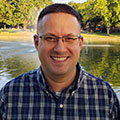 Jere PallisPallis plans to use his ASEM degree in his current position and to increase his opportunities for career advancement. “I received my [undergraduate] degree 15 years ago, but I need to remain competitive as the world continues to change,” Pallis said. “Many safety professionals have advanced degrees and certifications that keep them abreast of new technologies and methodologies of correcting problems. By completing this degree program, it will allow me to add new tools to my toolbox.”
Jere PallisPallis plans to use his ASEM degree in his current position and to increase his opportunities for career advancement. “I received my [undergraduate] degree 15 years ago, but I need to remain competitive as the world continues to change,” Pallis said. “Many safety professionals have advanced degrees and certifications that keep them abreast of new technologies and methodologies of correcting problems. By completing this degree program, it will allow me to add new tools to my toolbox.”
“Our faculty are experts in their fields, and all work or have worked in industry, where they have actually applied the concepts we teach in a real-world setting,” Burke said. “While we are an online program, we have our roots in a brick-and-mortar School of Engineering at the University of Alabama at Birmingham, which brings all the advantages of a top research university. We also continue to update our curriculum with new courses that address the needs of the safety profession and tackle the hazards that come with emerging technologies.”
In class, students study well-known and well-documented incidents, “including the Texas City Refinery disaster, Deepwater Horizon, Fukushima Daiichi nuclear disaster and others,” Burke said. “We also look at more recent incidents such as the grounding of the Boeing 777 or at wider disruptions such as that caused by COVID-19.”
5. Unique, challenging — but possible
Several ASEM students say they were initially unsure about going back to school. “I had not taken an online course before and graduated with my B.S. in 2007, so I was concerned not only about coming back to school, but coming back to school virtually,” said student Rustin Baca. “I was concerned I would not keep up with the students today.” The coursework has been challenging, but “I cannot express how much I have enjoyed the program,” Baca said. “You must dedicate yourself, pace yourself and be up for the challenge. But anyone can do it if they apply themselves.”
 Rustin BacaThe challenge has paid off for himself and his co-workers and employer, Baca adds. “I have found that the knowledge I have gained has already been applied at my organization,” he said. “In turn, my stakeholders have begun to feel the effects. So not only is the program challenging me, but it has already provided me the knowledge to apply within my organization. What you learn here is not a book. It is real-time knowledge that you can apply immediately to your position and organization.”
Rustin BacaThe challenge has paid off for himself and his co-workers and employer, Baca adds. “I have found that the knowledge I have gained has already been applied at my organization,” he said. “In turn, my stakeholders have begun to feel the effects. So not only is the program challenging me, but it has already provided me the knowledge to apply within my organization. What you learn here is not a book. It is real-time knowledge that you can apply immediately to your position and organization.”
“I am a hands-on person and a visual learner — I enjoy the social interaction with students and instructors to better understand the material,” Mashburn said. “My biggest concern about learning online was that this type of interaction would not be present, but this has not at all been the case. Our group discussions, guest lectures and live classes have been very beneficial.”
“My concerns about learning online were that I would not reap the benefits of access to all of my classmates’ diverse experiences and knowledge, and that I would struggle coming from a non-engineering background,” Sullivan said. “Thankfully, both of my concerns were quickly quashed. The discussion boards and group projects allowed the perfect opportunity to engage in meaningful conversation with classmates and professors, which broadened my knowledge of safety beyond that of my own industry. The courses, while challenging, were a great blend of technical knowledge and practical application, with an added bonus of flexibility to tailor projects to your own interests.”

